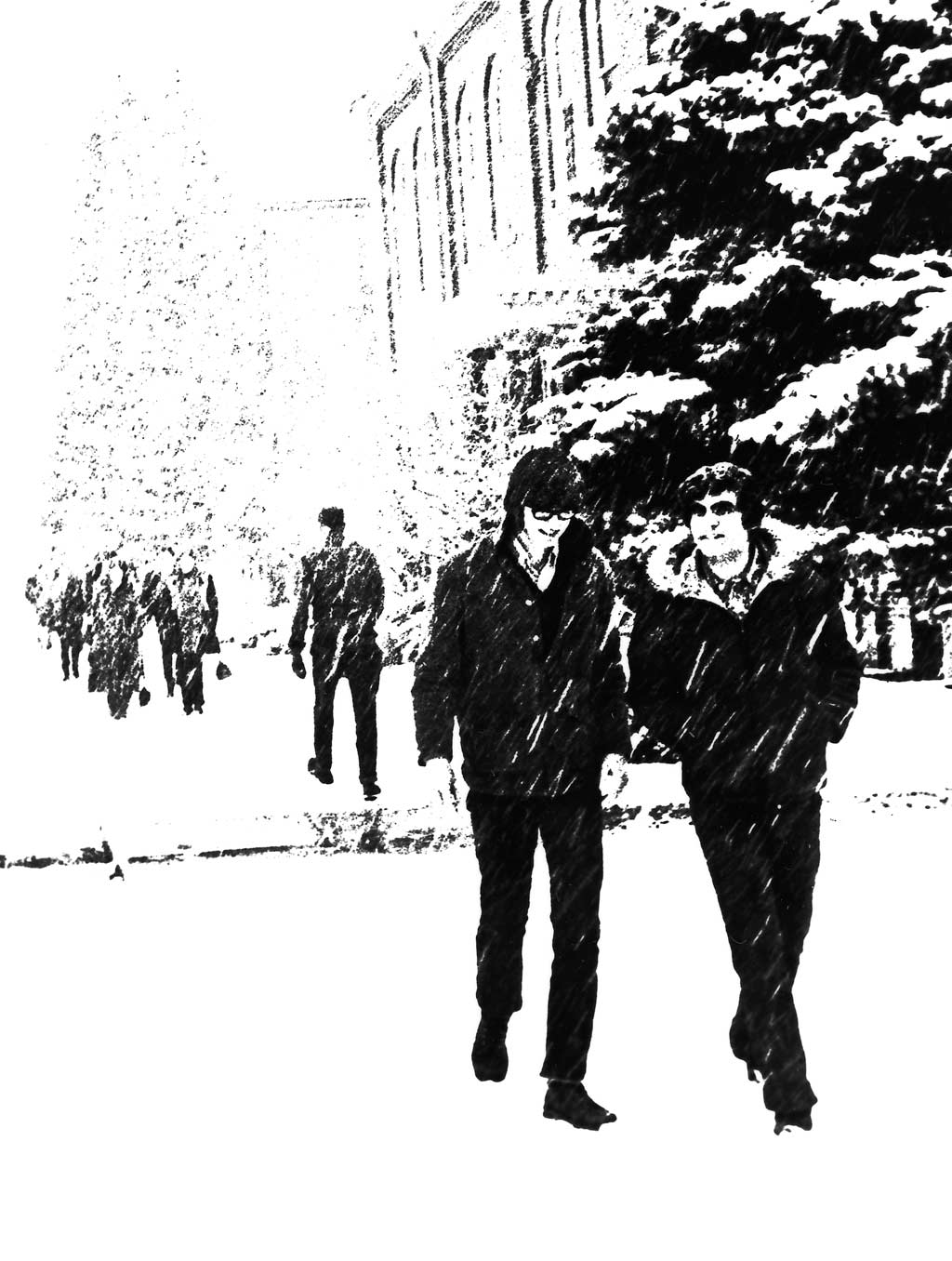I worked part time in 1973 in a print shop darkroom - knowing my way around a regular black-and-white film darkroom gave me transferable skills to develop film for the offset printing process current at the time. The film I shot and processed at the print shop was used by a "stripper" who laid out paper sheets that were used to make aluminum plates used to print on paper. This dark room process undoubtedly is done digitally now.
This gave me a chance to experiment with the print shop film I was using, extremely contrasty stuff that had only black and whites, no grays. I took relatively small pictures I'd printed in my regular darkroom at home and photographed them using the camera at the print shop. After developing the film, I took them home and printed them. I scanned these negatives now for the sake of this blog. Most of these were shot while I was a student at Midland Lutheran College in Fremont, Nebraska (now Midland University), the bulk of them fellow students.
Looking at the pictures I selected, it's pretty obvious I was a single guy - my favorite subjects were pretty young women. By taking out information - all the shades of gray - what is left really sticks out.
I used a 24 mm wide angle lens on my 35 mm camera to distort this picture.
My 200 mm telephoto lens gives an entirely different look.
I'd had fun in the past taking black-and-white pictures through snow and thought this would be interesting. And note there are actually males in this shot.
This is another picture of a girl, in dress typical of that time.
1973 was during the time of protest and the psychedelic - this was about as close as I got to being "with it". Although most details are obscured, I was in my darkroom in the basement.
This is a clearer picture of me in the darkroom. Part of the film I developed in the print shop darkroom were "halftones", film where I shot pictures through a screen to produce the dot vital to printing pictures on paper.
I had taken this picture of my younger sister earlier, in 1967. In painting art class in 1973, I blew up a piece of a screened negative like this onto a three by five foot canvas, making each dot an inch or so across. The canvas had to be viewed at a distance - across the street or so - for the mind to form a coherent image.
I'm back to attractive young women, in this case at a ticket booth at a Midland sporting event.
I found this photographic experimentation interesting, even arresting at times. However, coupled with a great deal of additional experimentation, I've come back to prefer pictures with the full range of visual information - I miss the grays that are so critical to black-and-white photography.








































